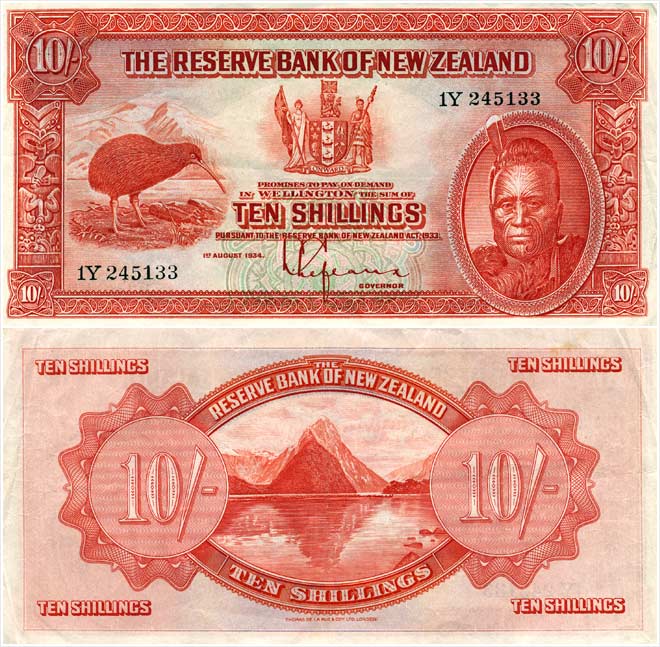
The first series of banknotes issued by the Reserve Bank in 1934 built on the existing designs and motifs of the Bank of New Zealand's notes. The notes were largely of the same design and size (178 by 98 millimetres) but differed in colour and in the borders, which featured Māori motifs. Each note was printed with its respective value and unique serial number.
On the front the notes feature a kiwi (by then well known as New Zealand's national bird), based on an engraving by Dutch artist John Gerrard Keulemans; the New Zealand coat of arms; and King Tāwhiao, the second Māori king (from a painting by Gottfried Lindauer). Mitre Peak in Fiordland is the main image on the back, on which the value of each note is also printed. There is a simple watermark, ‘Reserve Bank of New Zealand’.
The first-series 10-shilling note is a dark orange-red. Its border comprises carvings of Māori figures on the sides and kōwhaiwhai patterns at the top and bottom. The carvings are based on a poupou (post) from an old pā in Maketū, Bay of Plenty. The kōwhaiwhai, Ngutukura, is based on the hammerhead shark. At each corner, '10/-' is written. On the reverse, it is written in numerals and symbols, and in words.
Using this item
This item has been provided for private study purposes (such as school projects, family and local history research) and any published reproduction (print or electronic) may infringe copyright law. It is the responsibility of the user of any material to obtain clearance from the copyright holder.














Comments
I have cc/AD share # 191038 7
Terresa M Cleaver (not verified)
26 May 2022
I have a bank note of 10/-
leslie samson (not verified)
10 February 2022
Add new comment